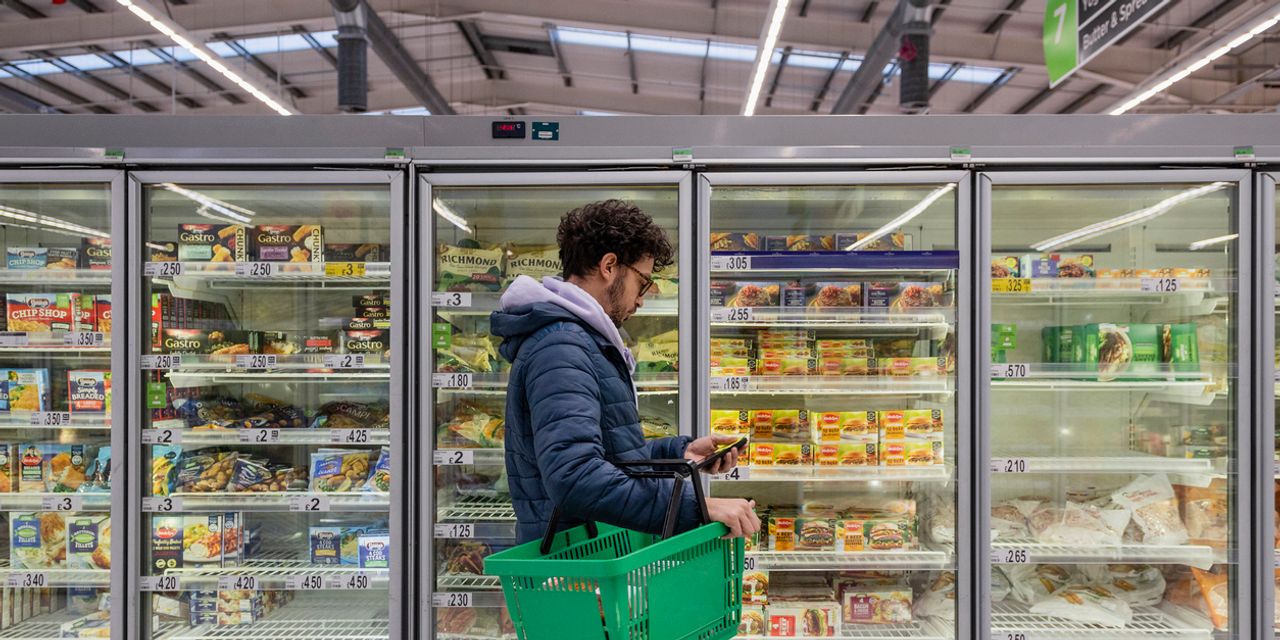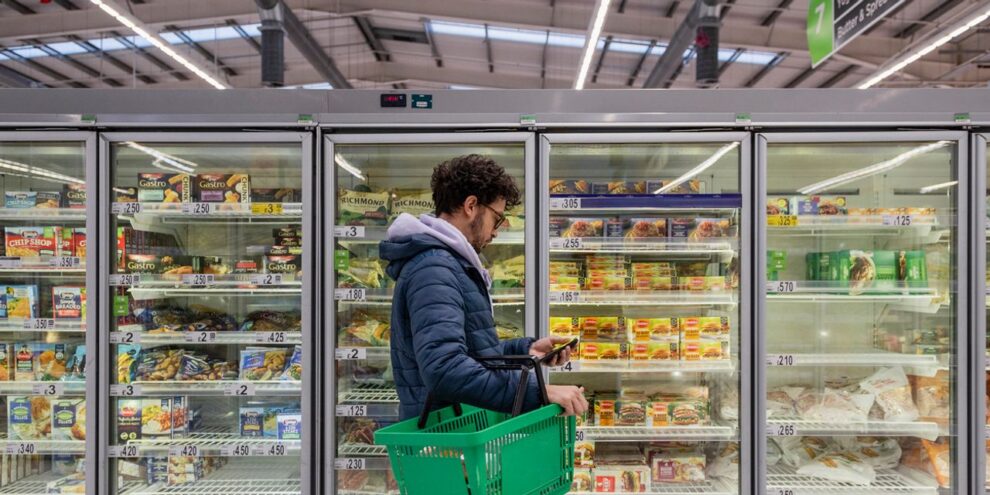
General inflation is easing, but the prices of some food items are not going down anytime soon. And the reasons are largely out of the Federal Reserve’s control.
In December, the rate of inflation fell to an annualized 6.5% from the 7.1% rate recorded in November, according to government data. But the annualized food-price inflation rate was 10.4% in December, significantly higher than the overall inflation rate even as it represented a slower rate of increase than in November, when food prices were 12% higher than in November 2021.
Inflation — running at nearly 40-year highs over the past year — has put the squeeze on Americans’ wallets. Through a series of jumbo rate hikes, the Federal Reserve has sought to tamp down inflation. Its target interest rate was lifted from a negligible level to a range of 4.25% to 4.50% by the end of 2022.
But a few factors that are affecting food prices are not going away soon. The war in Ukraine is affecting the prices of fertilizers and animal feeds; the avian flu continues to have an impact on the supply of eggs; and extreme weather conditions are complicating food production.
Here’s how a few popular food items are being affected.
Eggs
The price of eggs surged 59.9% on the year in December, up from 49% in November, according to the most recent government data. That means a carton of Grade A large eggs on average more than doubled in cost, with prices reaching $4.25 in December 2022, compared with $1.79 a year earlier. In some parts of the country, consumers are paying up to $8 for a carton of organic eggs.
Avian flu, which has resulted in the culling of millions of chickens and in a shortage of eggs, is the main reason behind the price increase. In a change from previous disease outbreaks that faded as summer ended, this time the avian flu has lingered into winter.
The holiday season is usually the peak time for consumer egg demand, which means that egg prices could tick down a bit in the new year, experts said.
But it will not be a significant drop. If the cost of feed keeps going up and the bird flu continues to kill large quantities of hens, the increased costs will most likely be passed on to consumers, said Curt Covington, senior director of partner relations at AgAmerica Lending, a financial-services company providing agriculture loans.
Experts, including the biggest egg producer in the country, Cal-Maine, say the effects of the avian flu will be a factor in the supply of eggs over the long term. “More than 43 million of the 58 million birds slaughtered over the past year to control the virus have been egg-laying chickens, including some farms with more than a million birds apiece in major egg-producing states like Iowa,” the Associated Press reported this week.
Read more: Cal-Maine says avian flu could continue to hit egg supplies after this year
“I suspect it will take much additional effort to ‘stamp out’ [bird flu] this time around and we may very well be dealing with the reality that this will be a year-round issue,” said Brian Earnest, lead economist for animal protein at CoBank, a national cooperative bank serving industries across rural America, in an email to MarketWatch.
The weekly supply of eggs on hand has also reached a historic low, he told MarketWatch. For the week ended Dec. 19, cases of eggs on hand reported by the USDA totaled 1.176 million. That’s a 20% drop year over year, and the lowest level for the same week since 2014, he said.
Also see: Why egg prices are sizzling — up 38% on last year
Butter
Butter prices rose by 31.4% on the year in December, up from 27% in November, making the average price for a pound of butter $4.81 nationally. It was $3.47 a year earlier.
Extreme heat and smaller cow herds are the main reasons behind that, experts told MarketWatch. Cows eat less and produce less milk in the heat, and the cost of maintaining milk production skyrocketed last year, making farmers unwilling to expand their herds.
Going into 2023, the price of butter could soften, but year-over-year price increases could still stay high, said Tanner Ehmke, lead economist of dairy and specialty crops at CoBank.
Cows are approaching their prime milk-producing season, which usually runs from March through May, although customer demand usually peaks during the recently completed holiday season, he said.
But the increase in supply will not be large, Ehmke said, because costs remain at record highs for farmers to maintain and expand their herds. Drought in the Western part of the country and the war in Ukraine continue to affect the supply and cost of feed.
“It’s [going to be] a very modest increase,” said Ehmke.
About 58% of the U.S. is at least “abnormally dry,” according to the National Integrated Drought Information System. It’s likely this year will see more drought-inducing La Niña weather conditions, according to National Weather Service’s Climate Prediction Center.
“If so, the third dry year in a row would signal the worst drought since at least 2011- 2013,” said Rob Fox, director of CoBank’s knowledge-exchange division in a 2023 preview released in December. “But this time it is more concentrated in the Western states, and it would be even more devastating to their already precarious water supplies and desiccated pastures,” he added.
At the same time, butter production is competing with the growing production of and appetite for cheese in the U.S., Ehmke told MarketWatch last September. U.S. cheese consumption per capita is growing around 1% to 2% each year, according to the USDA. U.S. cheese exports also increased, particularly to countries like South Korea and Japan.
Read more: Butter prices hit an all-time high — partly because extreme heat is taking a toll on dairy cows
Vegetable oil and margarine
Margarine, which is largely made of vegetable oil, is also seeing a huge price increase. The price of margarine, often used as a substitute for butter, rose by 43.8% in December, down slightly from 47.4% in November compared with a year before.
While oils made from soybeans, corn and sunflower seeds are among the food items that have been severely effected by the war in Ukraine, another dynamic is also at play, analysts suggested: A large quantity of vegetable oil is being used in the production of renewable fuels.
In 2021 and 2022, 38.4% of soybean-oil supplies were used for biofuel production — biofuel is a broader category than renewable diesel — up from 35.6% the year before, according to USDA data updated in October 2022.
Transitioning to the green economy laid out in the Inflation Reduction Act will require a greater supply of soybeans. The expected growth in soybean-oil-based renewable diesel will require considerably more bushels for domestic production, wrote Kenneth Scott Zuckerberg, CoBank’s lead economist for grain and farm supply, in a report in September.
At the moment, global grain and oilseed supplies are tight, and the combined global stocks of corn, wheat and soybeans are forecast to decline for the fifth straight year in 2023, according to the CoBank report.









